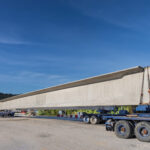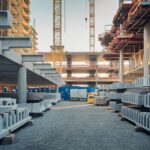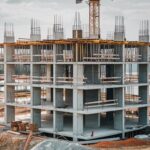When you think of infrastructure, it’s easy to picture skyscrapers, bridges, or maybe even a stadium packed with fans. But the real unsung heroes of modern cities? They’re hiding underground. Subways, tunnels, utility networks—these are the invisible veins and arteries that keep the heart of our cities beating. And guess what? Structural BIM (Building Information Modeling) is the secret weapon behind making sure these hidden systems are built smart, safe, and seamlessly integrated.
Now, before you roll your eyes and think, “Here comes another tech spiel,” hear me out. BIM isn’t just a flashy tool; it’s a game-changer for the kind of projects most people never see but rely on every day.
The Underground World: More Than Dirt and Darkness
Picture this: A city’s bustling downtown is expanding. Developers need to add a new subway line without disrupting the daily grind above ground. Or maybe it’s a sprawling utility network that needs an upgrade to meet rising demand. These aren’t your typical building projects.
Why?
Because you’re working blind—literally. Everything is underground, hidden by layers of earth, water, and existing infrastructure. And let’s not even get started on the challenge of mapping out what’s already down there. Old pipelines, forgotten tunnels, unexpected rock formations—it’s a hot mess.
This is where Structural BIM shines. It brings clarity to chaos, creating a digital twin of not just the new infrastructure but how it interacts with the existing environment. Think of it like X-ray vision for engineers and architects.
How BIM Turns the Invisible Visible
Let’s break it down. Structural BIM helps optimize underground and hidden structural elements in three major ways:
1. Precision Planning
BIM gives engineers an exact virtual model of the project, down to the last bolt and beam. It’s like playing Tetris, but instead of colorful blocks, you’re moving subway tunnels and utility lines into perfect alignment.
For instance, say you’re designing a tunnel beneath a city that already has a complex sewer system. With BIM, you can pinpoint the exact location of every pipe, avoid clashes, and reduce costly delays.
Real Talk Moment:
A few years back, I worked on a subway extension project in a crowded metropolitan area. Without BIM, we’d have been flying blind. Instead, BIM helped us predict and avoid clashes with existing underground utilities, saving the team millions in rework.
2. Seamless Integration with Visible Structures
Here’s the thing: underground projects don’t exist in isolation. A subway line needs station entrances above ground. Utility networks connect to buildings. If these elements don’t mesh seamlessly, you’ve got a recipe for disaster.
BIM bridges the gap. By integrating underground designs with above-ground structures, it ensures everything works as a cohesive system. The end result? A city that looks like it’s been carefully planned, not patched together.
3. Improved Collaboration
Traditional infrastructure projects often feel like a game of telephone. One team handles the tunneling, another deals with utilities, and a third focuses on the visible structures above ground. Miscommunications? They’re almost guaranteed.
But BIM creates a shared platform where all stakeholders can collaborate in real time. Engineers, architects, contractors—they’re all looking at the same virtual model. This minimizes errors and keeps everyone on the same page.
The Invisible Made Possible: Case in Point
Take subways, for example. Designing an underground transit system isn’t just about digging a hole and laying tracks. You’re dealing with ventilation shafts, emergency exits, and structural reinforcements.
BIM steps in by simulating every aspect of the project before a single shovel hits the dirt. It helps teams identify risks, optimize designs, and visualize how the system will look and function.
Another solid example? Utility networks. Whether it’s water, gas, or electrical lines, underground utilities are a maze of critical systems. Structural BIM ensures these networks are designed with pinpoint accuracy, avoiding disruptions and keeping maintenance straightforward
Why It Matters: A Human Perspective
Here’s a little personal story to drive this home. A while back, I visited a city that had just opened a new subway line. It ran smoothly, the stations blended seamlessly with the urban landscape, and the city felt more connected.
When I asked a local engineer about it, they credited BIM for the project’s success. “Without it,” he said, “we’d still be digging and hitting roadblocks—literally.”
It hit me then: The projects we can’t see have just as much of an impact on our daily lives as the ones towering over us. And BIM? It’s making sure those projects deliver.
The Future of Invisible Infrastructure
As cities grow, so does the demand for smarter, more efficient underground systems. BIM isn’t just a tool; it’s the foundation for this future.
With advancements in 3D modeling, AI, and data integration, BIM is becoming even more powerful. Imagine a system where you can predict maintenance issues years before they happen or visualize an entire city’s underground network in stunning detail.
And for those of you curious about how BIM services can support your next project, check out Tekance BIM Services. Whether it’s tunnels, subways, or utility networks, they’re at the cutting edge of turning the invisible into a well-oiled machine.
Let’s Wrap It Up
At the end of the day, invisible infrastructure isn’t just about tunnels and pipes. It’s about creating systems that keep our cities running smoothly, all while blending seamlessly with the visible world above. Structural BIM is the key to making that happen.
So, the next time you hop on a subway, sip water from the tap, or flip on a light switch, take a second to appreciate the hidden world below—and the technology that made it possible.
What other innovations do you think could transform invisible infrastructure in the future? Let’s brainstorm!








